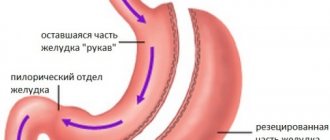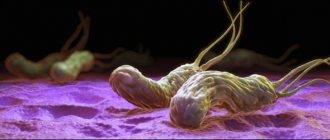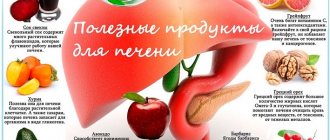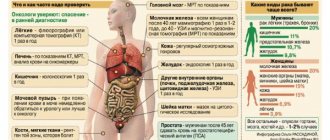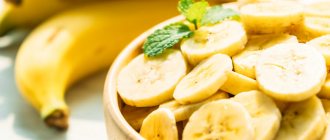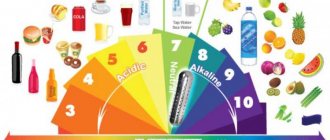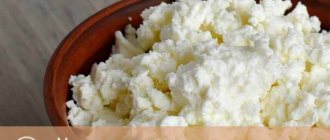- Motor. In the organ itself, food is accumulated and crushed for further digestion.
- Secretory. With the help of gastric juice, consisting of hydrochloric acid and enzymes (pepsin, chymosin and lipase), chemical processing and breakdown of foods entering the stomach occurs to absorb nutrients from them.
- Suction. During the processing of food in the stomach, some of the nutrients begin to be absorbed by the body, which facilitates intestinal activity.
- Excretory. The stomach breaks down the protein entering its cavity with blood and lymph into amino acids, which are effectively absorbed by the body, which is especially important during fasting and kidney failure.
- Protective. Hydrochloric acid in gastric juice is destructive to pathogenic bacteria and microorganisms, and thanks to the ability of active muscle contractions, the stomach can return low-quality products, protecting the body from poisoning.
- Endocrine. The cells of the mucous layer of the stomach produce over 10 biologically active substances and hormones necessary for the full functioning of the entire body.
The health of other human organs and systems, as well as the effectiveness of the immune system, directly depends on how well the stomach copes with its functions. It is impossible to ensure its normal functioning without proper nutrition and timely treatment of emerging diseases.
General rules
The intestinal tract is the most important component of the digestive system. It is in the intestines that the main processes of food digestion/absorption of nutrients into the blood and removal of toxins . The intestine is represented by two main sections: the small intestine, including the duodenum, jejunum, and ileum, and the large intestine, represented by the cecum, colon and rectum. The small intestine begins at the pylorus of the stomach and ends at the ileocecal valve , connecting the small and large intestines, which ends at the anus. The movement of food occurs due to peristaltic contractions. The main functions of the intestine are:
- secretion of digestive enzymes , hormones , mucus (duodenum);
- the process of cavity membrane breakdown of BZHU (throughout the entire small intestine);
- adsorption of amino acids , glucose, electrolytes, vitamins , liquids from processed food (small/large intestine);
- formation of feces, with active absorption of water (large intestine);
- endocrine function - synthesis of hormones: peptide , secretin , neurotensin ;
- synthesis of vitamins B12 and K .
- participation in the formation of immunity a - the intestinal immune system is represented by: lymph nodes, Peyer's patches, appendix.
Diseases of the small/large intestine are among the common diseases of the gastrointestinal tract. Conventionally, they can be divided into: inflammatory diseases ( enteritis , colitis , enterocolitis , Crohn's disease ), functional (intestinal dyspepsia , irritable bowel syndrome, dyskinesias ) and intestinal tumors (the vast majority are malignant). In the occurrence/development of intestinal diseases, the leading role is played by heredity, diseases of the upper gastrointestinal tract ( gastritis , peptic ulcer , pancreatitis ), intestinal infections, dietary errors, taking certain medications, excess body weight, stress, hypovitaminosis , lack of microelements, bad habits, physical inactivity .
Common symptoms of intestinal diseases include: abdominal pain, constipation / diarrhea , bloating, flatulence , nausea, blood/mucus in the stool, less often - increased body temperature, signs of intoxication, weight loss.
Diet therapy is the most important method of treating intestinal diseases, since proper nutrition ensures sparing of the intestines, allows you to relieve inflammation and normalize function in the shortest possible time. Despite the large list of intestinal diseases that can occur in acute/chronic form and manifest themselves in various symptoms, a therapeutic diet for the intestines is based on therapeutic Tables No. 3 and No. 4 ( 4A , 4B , 4B ), which are prescribed taking into account functional intestinal disorders, forms and stages of the disease.
Despite such diversity/differences in the range of products, they are all united by the most important principle of nutrition for intestinal diseases - maximum sparing from various negative impact factors, which is achieved by eliminating the negative mechanical/physical/chemical influence of food (optimal temperature of dishes, excluding a number of products, food consistency , methods of culinary processing of products), adherence to the regimen/principle of fractional meals, and thorough chewing.
A big problem for the majority of the population is neglect of preventive measures that avoid/reduce the risk of intestinal diseases. First of all, this is the lack of a nutritional system aimed at improving the health of the body in general and the intestines in particular. There are no uniform nutritional recommendations for all occasions, but it is important that your diet is focused on your health status, gender, age, and physical activity.
The basis of the diet is healthy food and a balanced diet. At the same time, it is extremely important to learn how to choose, combine foods and prepare healthy foods. An incorrectly selected nutritional system can have negative consequences for various organs and systems of the body. Thus, a high-protein diet is fraught with disruption of the intestinal microflora, the development of constipation and symptoms of endogenous intoxication.
To normalize and improve the functioning of the body, it is recommended to carry out regular intestinal cleansing, since it is in the intestines that waste products accumulate/stagnate, disrupting its normal functioning and affecting overall well-being/performance. The most common signs of intestinal “clogging” are: chronic fatigue, frequent headaches , gray/pale complexion, bad breath, feeling of heaviness in the stomach, insomnia /restless sleep, dry and flaky skin , rash. There are various methods of colon cleansing - mechanical: enema (in the absence of problems with the large intestine), colon therapy (after consulting a doctor, in a hospital setting) and a cleansing diet.
Mechanical procedures should be as gentle and safe as possible, but even in this case, it is not recommended to abuse cleansing enemas, since one may become accustomed to such stimulation, which can lead to problems with independent bowel movements, especially with frequent constipation . In addition, abuse of this procedure can lead to dysbiosis , vitamin deficiency and disruption of the digestive process. In this regard, the colon cleansing diet is a gentle method. Nutrition for bowel cleansing is based on the following principles and restrictions:
- Regular meals at a certain time and at least 4 times a day in small portions, which synchronizes the secretion of digestive juices and the motor activity of the gastrointestinal tract.
- Refusal to eat dry food, the volume of liquid should be at least 1.5 liters/day. Lack of fluid contributes to thickening of bile, development of constipation, and intestinal motility disorders.
- Exclusion from the diet of refractory animal fats (fatty red meat, fatty dairy products, confectionery creams, fast food products, impair the motor activity of the stomach, increase intestinal motility, promote weight gain, are potential carcinogens).
- Minimizing the consumption of smoked meats and products containing food additives (stabilizers, preservatives, dyes) that negatively affect the intestinal microflora and liver cells. It should be remembered that with excessive consumption of foods containing indigestible proteins (fatty lamb, pork, goose/duck) due to insufficient enzymatic decomposition of proteins/incomplete absorption, putrefactive dyspepsia , manifested by bloating/heaviness, abdominal pain, loose stools with discharge foul gases.
- Limiting the consumption of simple carbohydrates (sweets, baked goods, sugar), which cause putrefactive fermentation in the intestines as a result of not digesting a large amount of carbohydrates with the appearance of bloating/distension of the abdomen, rumbling, loose stools with foamy feces and the presence of gas bubbles on their surface/remnants of undigested food and copious release of gases. Do not overuse foods rich in essential oils (green/onions, radishes, garlic, radishes, rutabaga, mustard, horseradish) and spicy foods, as they strongly irritate the gastrointestinal mucosa.
- The diet for cleansing the intestines should contain, first of all, foods containing dietary fiber (vegetables/fruits, berries, bran, grains, leafy greens), which improve the chemical composition of bile, normalize intestinal motility, prevent constipation, stimulate the reproduction/growth of normal intestinal tract flora, remove toxins/radioactive compounds/carcinogens, normalize cholesterol metabolism. For this purpose, it is better to use so-called “brush salads” for the intestines - white cabbage, carrots, celery root, beets in various proportions in their raw form (finely chopped, without salt, seasoned with vegetable oil). Also, for this purpose, it is recommended to consume bran before meals (2 tablespoons with 200 ml of water), which, when combined with liquid, swell greatly and stimulate peristalsis. Also, in addition to raw/boiled vegetables, it is important to include whole grain products (porridge, sprouted wheat, whole grain bread, brown rice) and dried fruits (prunes, figs, dried apricots) in your diet. This diet is especially useful for “lazy bowels” (sluggish bowel syndrome), which occurs in people with poor diet/insufficient fluid intake due to physical inactivity and prolonged stress.
The most important component of the diet when cleansing the intestines should be low-fat fermented milk products (airan, yogurt, koumiss, kefir, acidophilus, cottage cheese, fermented baked milk, yoghurts). They suppress putrefactive processes in the intestines, improve intestinal motility, and eliminate constipation (it is important to know that fresh kefir eliminates constipation, while a 3-day-old drink, on the contrary, strengthens stool).
Quite often, especially while taking antibiotics , there are changes in the physiologically normal composition of the intestinal microflora, mainly opportunistic opportunistic microorganisms - Citrobacter , Proteus , Klebsiella , yeast-like fungi, which significantly affects intestinal function.
To restore microflora, the diet must contain “prebiotic” dishes/products, in particular fermented milk drinks enriched with bifido / lactobacillus , chicory root, raw garlic, Jerusalem artichoke, pumpkin, artichoke, raw onion, soybeans, asparagus, wheat bran. If there is no effect, it is recommended to take synbiotic drugs: Normoflorin , Eubicor , Bioflor , Bion-3 , Algilak , Bifainol , which contain both pro- and prebiotics .
Forbidden fruits
If an ulcer has affected the stomach, you should not eat fruits that have an aggressive effect on the mucous membrane of the digestive organs. The following fruits have this effect:
- citrus fruits (due to the ability to provoke allergic reactions, due to the large amount of acid in the composition);
- grapes (due to the ability to stimulate peristalsis and cause fermentation);
- kiwi, peaches, melon (due to the large amount of sugars and fruit acids).
Other fruits can be consumed, but always in limited quantities. Eating too much fruit of any kind is sure to cause harm.
Authorized Products
A diet for cleansing, restoring and normalizing intestinal function should include:
- Broths/soups prepared with pre-boiled meat/fish or vegetables including cereals/vegetables (cauliflower, potatoes, beets, zucchini, young fresh peas, carrots, pumpkin), well boiled/mashed and seasoned with a small amount of egg-milk mixture, cream/milk, butter.
- Lean red meat (veal, beef, chicken, turkey, rabbit) in pieces, well boiled/steamed or chopped (pate, cutlets, puddings, quenelles, soufflés, casseroles).
- White/gray bread baked yesterday (dried).
- Low-fat varieties of white fish (pollock, cod, pike perch, carp, hake) boiled/steamed, in pieces and products made from minced minced meat.
- Cereal dishes - well-cooked casseroles, cereals, porridges, puddings, with the addition of butter/vegetable oil.
- Raw/boiled/stewed vegetables in chopped/puree form - kohlrabi, beets, potatoes, pumpkin, green peas (young), parsley/dill, cauliflower inflorescences, tomatoes without skins.
- Low-fat dairy/fermented milk products enriched with bifido/lactobacteria.
- Non-acidic fruits/berries in the form of compotes, jellies, jelly, and also baked. Fresh - in small quantities (peeled/mashed).
- Drinks include green tea, rosehip infusion, freshly prepared vegetable juices, still mineral waters.
Table of permitted products
| Proteins, g | Fats, g | Carbohydrates, g | Calories, kcal | |
Vegetables and greens | ||||
| zucchini | 0,6 | 0,3 | 4,6 | 24 |
| cauliflower | 2,5 | 0,3 | 5,4 | 30 |
| potato | 2,0 | 0,4 | 18,1 | 80 |
| carrot | 1,3 | 0,1 | 6,9 | 32 |
| parsley | 3,7 | 0,4 | 7,6 | 47 |
| beet | 1,5 | 0,1 | 8,8 | 40 |
| dill | 2,5 | 0,5 | 6,3 | 38 |
Fruits | ||||
| quince | 0,6 | 0,5 | 9,8 | 40 |
| pomegranate | 0,9 | 0,0 | 13,9 | 52 |
| pears | 0,4 | 0,3 | 10,9 | 42 |
| dogwood | 1,0 | 0,0 | 10,5 | 44 |
| apples | 0,4 | 0,4 | 9,8 | 47 |
Berries | ||||
| blueberry | 1,1 | 0,4 | 7,6 | 44 |
Nuts and dried fruits | ||||
| dried pears | 2,3 | 0,6 | 62,6 | 249 |
Cereals and porridges | ||||
| buckwheat (kernel) | 12,6 | 3,3 | 62,1 | 313 |
| semolina | 10,3 | 1,0 | 73,3 | 328 |
| oat groats | 12,3 | 6,1 | 59,5 | 342 |
| cereals | 11,9 | 7,2 | 69,3 | 366 |
| white rice | 6,7 | 0,7 | 78,9 | 344 |
Flour and pasta | ||||
| pasta | 10,4 | 1,1 | 69,7 | 337 |
| milk pasta | 11,5 | 2,9 | 67,1 | 345 |
| noodles | 12,0 | 3,7 | 60,1 | 322 |
Bakery products | ||||
| white bread crackers | 11,2 | 1,4 | 72,2 | 331 |
Confectionery | ||||
| jam | 0,3 | 0,2 | 63,0 | 263 |
| jam | 0,3 | 0,1 | 56,0 | 238 |
| marshmallows | 0,8 | 0,0 | 78,5 | 304 |
| fruit and berry marmalade | 0,4 | 0,0 | 76,6 | 293 |
| meringues | 2,6 | 20,8 | 60,5 | 440 |
| paste | 0,5 | 0,0 | 80,8 | 310 |
Raw materials and seasonings | ||||
| dried bird cherry | 8,4 | 0,0 | 16,8 | 101 |
Dairy | ||||
| skim milk | 2,0 | 0,1 | 4,8 | 31 |
| sour cream | 2,8 | 20,0 | 3,2 | 206 |
| acidophilus | 2,8 | 3,2 | 3,8 | 57 |
Cheeses and cottage cheese | ||||
| cheese | 24,1 | 29,5 | 0,3 | 363 |
| cottage cheese 0.6% (low fat) | 18,0 | 0,6 | 1,8 | 88 |
Meat products | ||||
| boiled beef | 25,8 | 16,8 | 0,0 | 254 |
| boiled veal | 30,7 | 0,9 | 0,0 | 131 |
| rabbit | 21,0 | 8,0 | 0,0 | 156 |
Bird | ||||
| boiled chicken | 25,2 | 7,4 | 0,0 | 170 |
| turkey | 19,2 | 0,7 | 0,0 | 84 |
Fish and seafood | ||||
| Red caviar | 32,0 | 15,0 | 0,0 | 263 |
| black caviar | 28,0 | 9,7 | 0,0 | 203 |
Oils and fats | ||||
| butter | 0,5 | 82,5 | 0,8 | 748 |
Non-alcoholic drinks | ||||
| mineral water | 0,0 | 0,0 | 0,0 | — |
| green tea | 0,0 | 0,0 | 0,0 | — |
| black tea | 20,0 | 5,1 | 6,9 | 152 |
Juices and compotes | ||||
| carrot juice | 1,1 | 0,1 | 6,4 | 28 |
| pumpkin juice | 0,0 | 0,0 | 9,0 | 38 |
| Apple juice | 0,4 | 0,4 | 9,8 | 42 |
| * data is per 100 g of product | ||||
Sad statistics
A sedentary lifestyle and poor diet often have a negative impact on the digestive system. You can change the situation for the better, for example, by diversifying your diet with healthy plant fibers - fiber. This food component, like mineral salts or water, plays one of the main roles in the life of the body, but the average person consumes it two times less than the recommended amount (it is equal to 30-35 g per day).
Photo: DCStudio / freepik.com
Fully or partially limited products
The diet of the diet for cleansing, restoring and normalizing intestinal function excludes:
- Concentrated broths and soups based on meat/fish/mushroom broths with fried dressing, first courses with the addition of millet, kidneys and cabbage (solyanka, cabbage soup, okroshka, rassolnik), bean, pea, onion soup.
- Fatty red meats, smoked meats, fried meats and fish, lamb, goose/duck meat, fried potatoes, pancakes, pancakes, fast food products and semi-finished products.
- Salted, smoked and fried fish, canned fish.
- Dishes made from legumes, some cereals (wheat, barley, millet, pearl barley and corn porridge).
- Vegetables that have coarse fiber/difficult to digest and irritate the intestinal mucosa (ginger, radish, radishes, mushrooms, garlic, green onions, pickled vegetables, spinach and sorrel).
- Onion, meat, mushroom, fish, garlic, any mayonnaise-based sauces.
- Full-fat dairy/fermented milk products, full-fat puddings, fresh bread, nut and raisin muffins, ice cream, chocolate, spices/hot condiments, sauces.
- Strong black tea/coffee and cocoa, alcoholic drinks, fruit sparkling waters.
Table of prohibited products
| Proteins, g | Fats, g | Carbohydrates, g | Calories, kcal | |
Vegetables and greens | ||||
| vegetables legumes | 9,1 | 1,6 | 27,0 | 168 |
| beans | 6,0 | 0,1 | 8,5 | 57 |
| swede | 1,2 | 0,1 | 7,7 | 37 |
| cabbage | 1,8 | 0,1 | 4,7 | 27 |
| cucumbers | 0,8 | 0,1 | 2,8 | 15 |
| parsnip | 1,4 | 0,5 | 9,2 | 47 |
| parsley (root) | 1,5 | 0,6 | 10,1 | 49 |
| white radish | 1,4 | 0,0 | 4,1 | 21 |
| turnip | 1,5 | 0,1 | 6,2 | 30 |
| celery | 0,9 | 0,1 | 2,1 | 12 |
| green beans | 2,8 | 0,4 | 8,4 | 47 |
| horseradish | 3,2 | 0,4 | 10,5 | 56 |
| garlic | 6,5 | 0,5 | 29,9 | 143 |
| spinach | 2,9 | 0,3 | 2,0 | 22 |
| sorrel | 1,5 | 0,3 | 2,9 | 19 |
Fruits | ||||
| bananas | 1,5 | 0,2 | 21,8 | 95 |
| melon | 0,6 | 0,3 | 7,4 | 33 |
Berries | ||||
| grape | 0,6 | 0,2 | 16,8 | 65 |
Nuts and dried fruits | ||||
| raisin | 2,9 | 0,6 | 66,0 | 264 |
Cereals and porridges | ||||
| corn grits | 8,3 | 1,2 | 75,0 | 337 |
| pearl barley | 9,3 | 1,1 | 73,7 | 320 |
| Wheat groats | 11,5 | 1,3 | 62,0 | 316 |
| millet cereal | 11,5 | 3,3 | 69,3 | 348 |
| barley grits | 10,4 | 1,3 | 66,3 | 324 |
Bakery products | ||||
| vysivkovy bread | 9,0 | 2,2 | 36,0 | 217 |
| Old Russian grain bread | 9,6 | 2,7 | 47,1 | 252 |
| Rye bread | 6,6 | 1,2 | 34,2 | 165 |
Confectionery | ||||
| jam | 0,3 | 0,2 | 63,0 | 263 |
| jam | 0,3 | 0,1 | 56,0 | 238 |
| candies | 4,3 | 19,8 | 67,5 | 453 |
| cookie | 7,5 | 11,8 | 74,9 | 417 |
| butter cookies | 10,4 | 5,2 | 76,8 | 458 |
Ice cream | ||||
| ice cream | 3,7 | 6,9 | 22,1 | 189 |
Cakes | ||||
| cake | 4,4 | 23,4 | 45,2 | 407 |
Raw materials and seasonings | ||||
| seasonings | 7,0 | 1,9 | 26,0 | 149 |
| mustard | 5,7 | 6,4 | 22,0 | 162 |
Dairy | ||||
| sour cream 25% (classic) | 2,6 | 25,0 | 2,5 | 248 |
Cheeses and cottage cheese | ||||
| cottage cheese 18% (fat) | 14,0 | 18,0 | 2,8 | 232 |
Meat products | ||||
| pork | 16,0 | 21,6 | 0,0 | 259 |
| pork liver | 18,8 | 3,6 | 0,0 | 108 |
| salo | 2,4 | 89,0 | 0,0 | 797 |
Sausages | ||||
| smoked sausage | 16,2 | 44,6 | 0,0 | 466 |
| dry-cured sausage | 24,1 | 38,3 | 1,0 | 455 |
Bird | ||||
| smoked chicken | 27,5 | 8,2 | 0,0 | 184 |
| duck | 16,5 | 61,2 | 0,0 | 346 |
| smoked duck | 19,0 | 28,4 | 0,0 | 337 |
| goose | 16,1 | 33,3 | 0,0 | 364 |
Fish and seafood | ||||
| dried fish | 17,5 | 4,6 | 0,0 | 139 |
| smoked fish | 26,8 | 9,9 | 0,0 | 196 |
| canned fish | 17,5 | 2,0 | 0,0 | 88 |
| cod (liver in oil) | 4,2 | 65,7 | 1,2 | 613 |
Oils and fats | ||||
| animal fat | 0,0 | 99,7 | 0,0 | 897 |
| cooking fat | 0,0 | 99,7 | 0,0 | 897 |
Non-alcoholic drinks | ||||
| bread kvass | 0,2 | 0,0 | 5,2 | 27 |
| instant coffee dry | 15,0 | 3,5 | 0,0 | 94 |
| black tea | 20,0 | 5,1 | 6,9 | 152 |
Juices and compotes | ||||
| Orange juice | 0,9 | 0,2 | 8,1 | 36 |
| grape juice | 0,3 | 0,0 | 14,0 | 54 |
| Cherry juice | 0,7 | 0,0 | 10,2 | 47 |
| Strawberry juice | 0,6 | 0,4 | 7,0 | 31 |
| tangerine juice | 0,8 | 0,3 | 8,1 | 36 |
| tomato juice | 1,1 | 0,2 | 3,8 | 21 |
| * data is per 100 g of product | ||||
Bananas in the diet of ulcer patients
Bananas have an excess of sugars.
This overseas fruit causes some concern when eaten.
After all, the body of people living in harsh climates is not initially adapted to exotic things.
However, banana is still an exception. The harm of this fruit is only in excess of sugars.
Therefore, overweight people should eat bananas little by little. But for ulcer sufferers, this is perhaps one of the healthiest fruits.
According to scientists, banana has a depressing effect on the bacteria Helicobacter pylori. But it is these bacteria that contribute to the appearance and development of ulcers.
The soft consistency of the fruit allows the eaten fruit to have an enveloping effect on the mucous membrane. The rich potassium content in banana helps restore the loss of this trace element after taking diuretics.
Reviews and results
Nutrition for cleansing, restoring and normalizing intestinal function is an essential component of healing the body, improving well-being and increasing performance. Such diets contain physiological norms of food nutrients and can be practiced over a long period of time. If you constantly adhere to it, even not in a very strict version, then you can avoid intestinal diseases.
- “... In the last 2 years, problems with the intestines have appeared (pain, bloating, frequent constipation). I contacted my local doctor, who said that I needed a diet that was gentle on the intestines. Therefore, I switched to light soups, boiled chicken, steamed cutlets, low-fat cottage cheese and fermented milk products, vegetables and fruits. I cook most dishes in a slow cooker. I drank Linux. And indeed, after a month the intestines returned to normal. I think I will practice this diet often”;
- “... After an enterovirus infection, I developed chronic enteritis. Despite the relatively mild course, exacerbations periodically occur, especially associated with dietary errors. This forces me to switch to diet food, which I usually stay on for 1-1.5 months. I also take enzymes/herbal decoctions, after which the intestinal condition returns to normal, and I switch to my usual diet.”
Menu (power mode)
There is no universal menu for stomach diseases, as such, since the principles of nutrition and the degree of coolant sparing at different stages of the disease vary significantly. However, it is important to consider that dietary nutrition does not mean a lack of variety in the menu. Psychological dissatisfaction with tasteless food and a limited diet can cause aggravation, since the psychological state has a direct impact on the physical.
There are various dietary recipes, ranging from simple to complex gastronomic delights. The main condition for tasty dishes is that they should not be overcooked. And if during the period of exacerbation the diet is quite poor, then during the period of remission the patient should receive tasty and varied dishes.
Sources
- Cordeiro BF., Alves JL., Belo GA., Oliveira ER., Braga MP., da Silva SH., Lemos L., Guimarães JT., Silva R., Rocha RS., Jan G., Le Loir Y., Silva MC., Freitas MQ., Esmerino EA., Gala-García A., Ferreira E., Faria AMC., Cruz AG., Azevedo V., do Carmo FLR. Therapeutic Effects of Probiotic Minas Frescal Cheese on the Attenuation of Ulcerative Colitis in a Murine Model. // Front Microbiol - 2022 - Vol12 - NNULL - p.623920; PMID:33737918
- Yamashita LM., Corona LP., Dantas da Silva E., Monteiro de Mendonça AP., de Assumpção D., Barros Filho AA., Barrett JS., Geloneze B., Vasques ACJ. FODMAP project: Development, validation and reproducibility of a short food frequency questionnaire to estimate consumption of fermentable carbohydrates. // Clin Nutr - 2020 - Vol - NNULL - p.; PMID:33309413
- Renna M., Signore A., Paradiso VM., Santamaria P. Faba Greens, Globe Artichoke's Offshoots, Crenate Broomrape and Summer Squash Greens: Unconventional Vegetables of Puglia (Southern Italy) With Good Quality Traits. // Front Plant Sci - 2022 - Vol9 - NNULL - p.378; PMID:29636760
Why are herbal remedies effective?
The secret is in a perfectly balanced composition. In many pharmaceutical tablets or gels, one of the main active ingredients is pancreatin powder, or lactose, and other substances can be dangerous to other organs.
In the case of herbal remedies, you are dealing only with natural ingredients, which, together with proper nutrition, make the stomach healthy:
- papaya fruits - help digest food, improve the functioning of the gastrointestinal tract and eliminate spasms;
- pineapple bromelain – quickly breaks down food and effectively burns excess fat;
- artichoke leaves – protect the liver, normalize its function and improve the excretion of bile;
- turmeric root extract – relieves inflammation in the gastrointestinal tract and lowers acidity levels, removes heaviness.
Taking care of your gastrointestinal tract is important if you want to:
- good digestion at any age;
- proper metabolism and healthy weight;
- prolong the youth and beauty of the body and body.
Herbal remedies for improving digestion “skilfully” help in solving these problems. Unlike pharmaceutical products, they act more gently and ideally meet the “do no harm” rule. If you include such remedies in your diet, you can once and for all get rid of a number of unpleasant symptoms and conditions:
- gastrointestinal disorder;
- heaviness and heartburn;
- pain and cramps;
- nausea;
- constipation.
